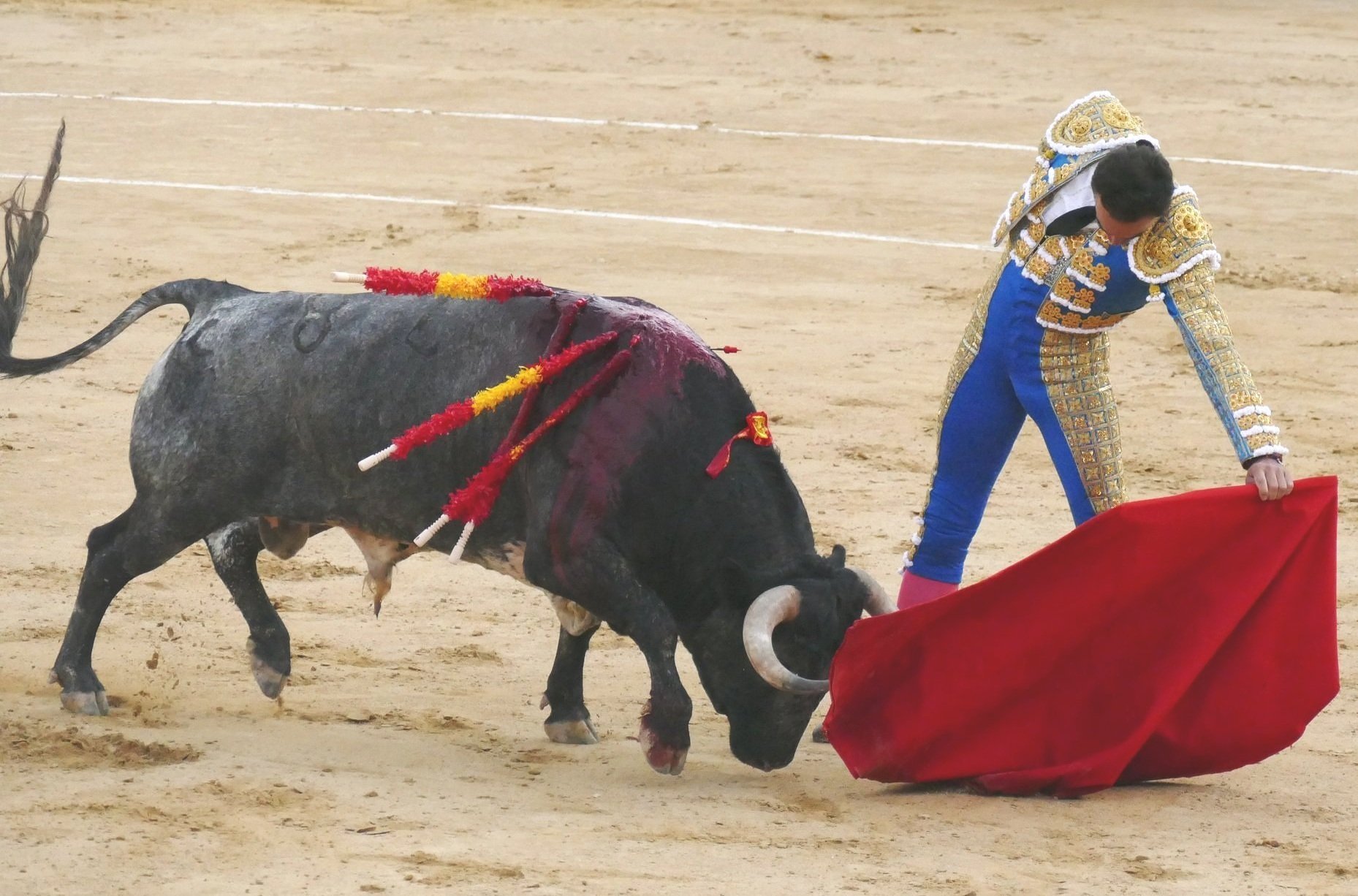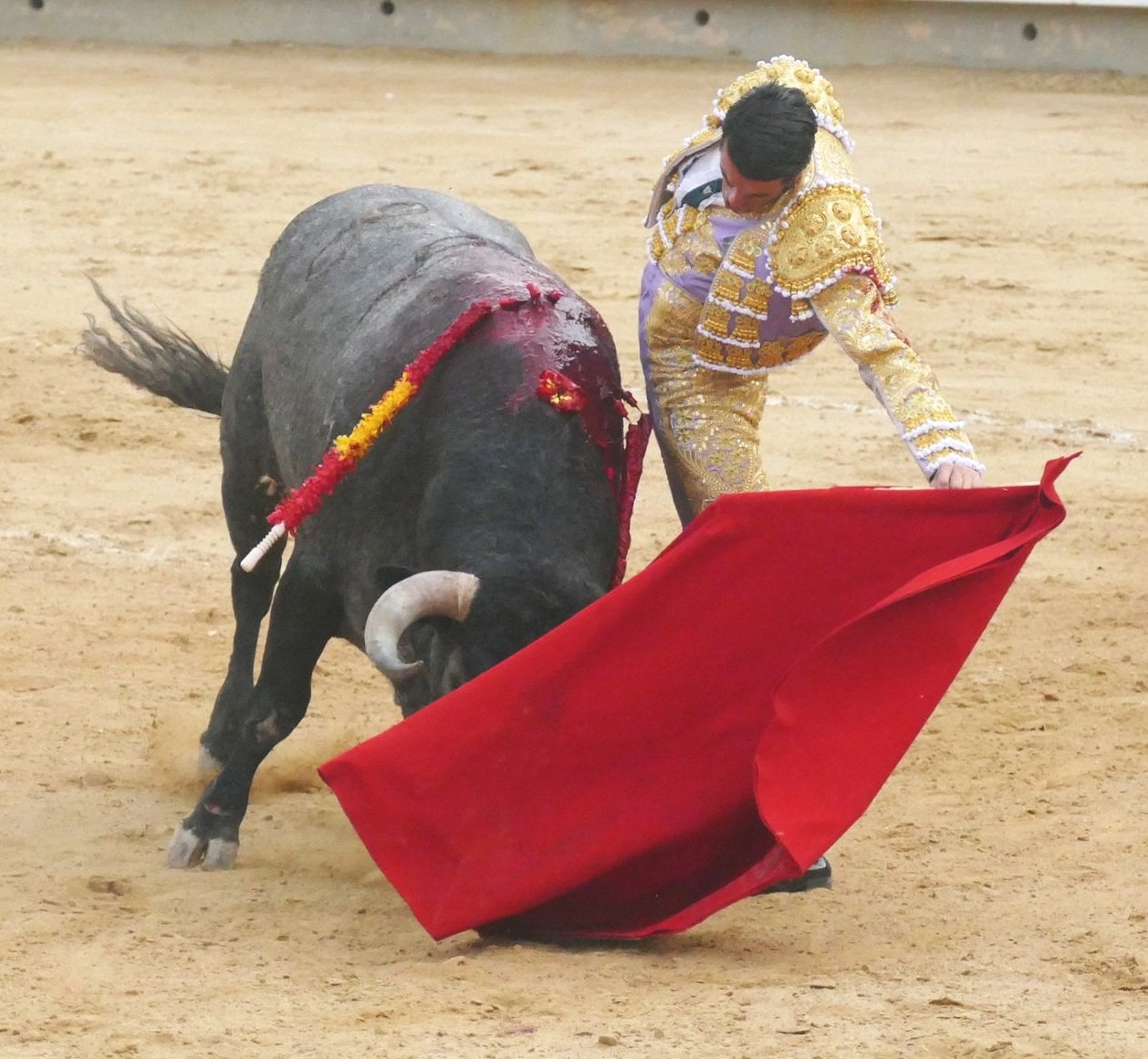Albacete, September 16: ¡4 faenones 4!
At one stage, mundotoro’s headline for its report of this corrida was ‘Dos faenas cumbres’. Only two, I thought? I’d counted four!
Let’s get Daniel Luque out of the way first. Although it was good to see him back in a suit of lights, and he was appearing here the day after cutting five ears in Nîmes from bulls of the same ganadería (La Quinta), he was clearly not 100%. His first animal today was none too easy, but Daniel was disappointing, producing very little in the faena and killing with two pinchazos from the side (the first an unplanned recibiendo) and a bajonazo.
His second laquinta was a great looking animal that came charging into the ring and was impressive going to the picador. Iván García placed some excellent banderillas. But Luque simply spent the faena pegando single passes, while his estocada exited one of the bull’s flanks before two descabellos finished things. There were palmas for the bull en arrastre and silence for Daniel, who subsequently announced he was to continue recuperating from the August injuries he received at El Puerto de Santa María and was putting on hold all his remaining September contracts.
I was delighted that Albacete’s empresa had seen fit to include Manuel Jesús El Cid in the feria carteles and with bulls of La Quinta. El Cid, who made his comeback with a strong performance in Sevilla’s April feria, has fared badly in terms of contracts this season but well in terms of strong performances in the plazas that have put him on. Today, my positive anticipation about seeing the sevillano in action was fully justified.
The appreciative aficionados of Albacete gave Manuel an ovation in greeting before his first bull entered the ring, the animal’s looks bringing further applause. El Cid produced a brief sequence of verónicas and media, and repeated this in the quite. The faena was superb. The matador led the bull to the centre of the ring with a pleasing series of passes, then moved the cloth early to his famous left hand. Then it was as if he had never been away, with one wonderful series of linked naturales after another, Manuel making it all look so easy and interleaving molinetes or faroles amongst the classic passes. Towards the faena’s end, the bull began raising its head. Being El Cid, one was anxious as to the success or otherwise of his swordwork, his weakest aspect; on this occasion, a half-sword to the lungs brought the bull’s death and diluted the matador’s award to a single ear.
El Cid’s second faena, following some testing capotazos, a near-derribo en varas and another quite of verónicas and a media verónica, was no less captivating. Once again, the torero went early to the left hand, bringing off naturales, but the tandas of derechazos that followed were of a similar high quality. The series were interspersed with trincheras and faroles and the performance ended with open-legged naturales de frente. While any further reward for the matador was lost with four pinchazos and an estocada, an aviso sounding, the bull - for whom some spectators had been heard seeking an indulto - was awarded a vuelta en arrastre.
The other two faenones came from Emilio de Justo. He produced some fine verónicas and a media to a lovely-looking laquinta which was initially weak on its back legs and falling. The matador effectively asked for it to be kept in, and he delivered a faena de menos a más that developed into great series on both the right and left hands, capped with naturales given with the right hand and naturales de frente to finish. Emilio is going through a bad phase with the estoque, however, and this lidia ended with two pinchazos and an estocada caída. The bull was surprisingly given applause en arrastre, while de Justo won an ovation and took saludos from the medios.
The last bull of the afternoon came charging in to the plaza, where Emilio gave it verónicas the matador was unable to sustain. The quite was scrappy - two chicuelinas and a media verónica, each a single lance as the bull wandered off in between. After the banderillas, de Justo dedicated to the plaza and embarked on a superb faena, begun with half-kneeling naturales. Series of derechazos and naturales followed in the centre of the plaza, given with an air of abandonment, as Emilio leaned back in the passes and swung the cloth arm wide. There was a sequence of pases ayudados and then, having collected the estoque, the sword was temporarily thrown away so that Emilio could carry off naturales de frente with the cloth in the right hand, this bull being best on its right horn. It was great stuff and, this time, the estocada looked good, but de Justo needed to descabellar to finish the animal off, and it took him four attempts before the bull fell. And so it all ended to another ovation and saludos, while the bull was given a generous vuelta en arrastre - the second of the afternoon.
Despite the problematic swordwork, this had been a very satisfying corrida, the second in two days. Indeed, it proved an agreeable end to Albacete’s feria and to my September trip, as the following day’s victorinada for Manuel Escribano, Rubén Pinar and Sergio Serrano was cancelled due to the waterlogged state of the ring (why the empresa didn’t follow the weather forecast which said that rain would fall virtually up to the corrida’s start time and keep a cover on the sand until the last minute, I don’t know - the fact is the rain stopped about 10 minutes after the corrida was due to start and didn’t return that evening).








